

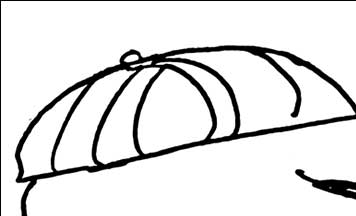
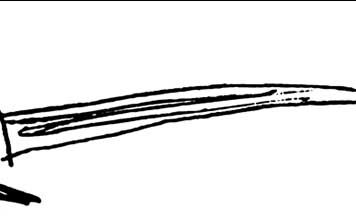
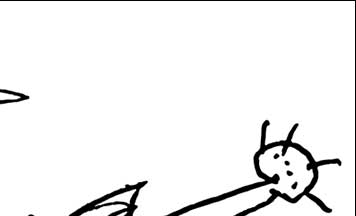
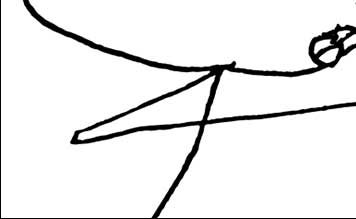
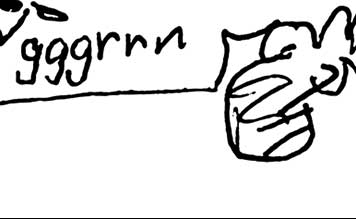
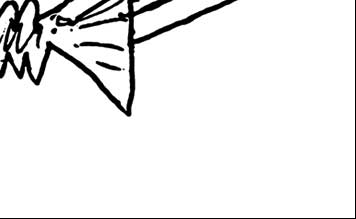
Ed. Note: To get the correct chronological sequence of SMWRG history you should read these history sections in the following order:
The Teenage Queers & The Enemy > The Nervebreakers > Bag of Wire > Stick Men With Ray Guns.
Stick Men With Ray Guns (SMWRG) formed in Dallas, Texas, in the spring of 1981 with me on guitar (ex-Nervebreakers & Bag of Wire), Bobby Soxx on vocals (ex-Teenage Queers & the Enemy) and Ft. Worth drummer Scott Elam. Quad Pi bassist Mark Ridlen lent his services, playing the first shows until a permanent bass player could be found.
Our first public appearance was at Zero’s in Fort Worth in the late spring of 1981. Also on the bill was a two-person noise band, Hole. Maybe they should sue Courtney Love. Maybe we all should. Hole bassist Bob Beeman had co-produced the Bobby Soxx single earlier that year. Bob joined soon after that show. The lineup now complete, by the summer of 1981 SMWRG was busy creating havoc on the Texas club scene. Finally, not only did Bobby have a band that could hold its own with him on stage, but presented him with a deafening sonic palette of unbelievable power, violence and hostility. Something like putting your head in a threshing machine.
SMWRG was performance art. We used extreme methods to point out the irrationality of life, hatred, violence and racism. Although obviously based around front man Bobby Soxx, SMWRG soon developed an unusual stage persona, one with no pretense of rationality. We simply let the band seek its own level, and that level was strange indeed. Taking on a life of his own, the Stick Man was always there, ready to overreact to anything. There was a characteristic Stick Man response to everything, no matter how ludicrous, ill-considered or irrational it might be. Just like Professor Quincy Wagstaff (Groucho Marx in the classic Marx Brothers comedy film, Horsefeathers) said: “whatever it was, we were against it.” It was a big night out on the town for the Id and the reptile brain.
Shows were unpredictable, often incorporating odd or obnoxious multimedia stage introductions with intentionally irritating stage lighting, and we were very, very loud. As the band action-painted the room with a howling din, Bobby played the leering, raving idiot on stage, making fun of himself and anything that caught his attention. The intent was to create a hostile, uncomfortable environment that was always teetering on the edge, just out of control. It succeeded. Things happened.
When we began playing in the late spring of 1981 we worked quite a bit at Mike Rainey's Metamorphosis Concert Hall. I really liked the place. It was so small that 100 people packed it to the point of bursting. Mike let us do anything with the stage that we wanted and we took full advantage. Bob Beeman and I would set up the lighting in all sorts of odd and obnoxious ways. We sometimes used a series of four vertical white stripes that would illuminate each member (but only as long as long as they stayed in that narrow area). We would also light the stage with a single 12" horizontal white stripe about chest high. We didn't care what the audience thought.
We really enjoyed playing with the whole idea of stage lighting. Unfortunately, other clubs weren't nearly so cooperative and we never paid much attention to lighting after Metamorphosis closed its doors. We were also interested in film and video, sometimes starting shows with videotaped images and sometimes setting up monitors that would show nothing but video noise throughout the performance. I think that this was the most satisfying time for me creatively. We literally would do anything that we felt like doing at any time.
We started most shows with some sort of customized introduction tape. My favorite was "Purposeful Lady Slow Afternoon" by Robert Ashley. It was the opening number of the "Wolfman Motorcity Revue," a theater work foramplified voices and tape. I had acquired the recording while working as program director for KCHU radio. I was asked to remove it from the building because every time it was played on the air we received complaints from the FCC. Whenever we used this roughly ten minute piece as an opener it never failed to get the audience up on its feet, screaming for us to turn it off. It doesn't get any better than that.
Bobby’s onstage antics, combined with the openly antagonistic, chaotic and aggressive live sound, made SMWRG a difficult band to follow. In the Media gallery is a picture from a show at The Island in Houston (note a very young Butthole Surfer Gibby Haynes at the far left). Most bands obviously refused to be put in that position twice.
SMWRG took its name from Stick Man with Ray Gun Comics. The Stick Man was a crazed racist vigilante who wore a baseball cap and carried a big ray gun. He walked the streets of his neighborhood blowing away anyone who offended his insane sense of order, politics, or racial purity. Generally completely irrational, violent, and patently offensive stuff. This incredibly offensive strip appeared in The Flaming Gavel, a peculiar tract Bobby produced by photocopying his drawings, writings, newspaper clippings, etc., then stapling and pasting them together into booklets, and selling them at local record stores for $1.
That same fateful night in January 1981 while Bag of Wire was playing DJ’s, I was there with Vicky Bowles (Valerie’s sister and later my wife) on our first date. After the show Bobby presented her with an autographed copy “The Flaming Gavel” on which he gallantly proclaimed Vicky to be exempt from the human carnage.
Bobby always was a romantic. Vicky is a tabloid kinda’ gal and worked for years at the Weekly World News, The National Examiner, and The Globe UK. Some sleazy terrorist cowards murdered her friend Bob Stevens with anthrax in October 2001. They were probably Americans. Don't you ever forget it.
When we left the east coast of Florida for the Naples/Fort Myers area, she went to work for the Naples Daily News where she has been and editor for the past 10 years
Bobby Soxx wrote the very best lyrics; read them. They are nothing less than art. Grave City, Christian Rat Attack and What Am I? are masterpieces. He was also incredibly funny, often making it hard to play because we were laughing so hard. He was the consummate professional, always showing up for rehearsals and shows. Although Bobby was well known for abusing drugs, after 1987 alcohol seemed to take over and began to do untold damage. Bobby died in Dallas of liver failure on October 22, 2000. Sadly, for the last years of his life there wasn’t so much Bobby left in there. I miss the old Bobby very much. Please don’t let alcohol kill you, too.
Bob Beeman created the most interesting bass guitar sound I’ve ever heard; deafening volume, distortion and feedback. Terrible, yet beautiful to behold. Although he had a number of different amps over the years, that last Peavy was really something. Bob kept a cool head when it was necessary. It was often necessary. At least someone did.
Interested in photography and art, Scott Elam brought a badly needed stability and considerable thoughtfulness to his drumming. His stripped-down style gave structure whenever the screeching threatened to get too abstract. Scott was very interested in photography and after SMWRG broke up he moved to New York City where he has became a professional photographer. He has been the lead photographer for a major New Your City auction house and spends his days photographing some of the most valuable art objects in the world. He was a great admirer of Rolling Stones drummer Charlie Watts. So am I.
Always believing that the guitar was more important than anything else, I forced my guitar straight to the front of this mess, using my instrument as a bludgeon. I refused to back off or turn down for anyone. Especially the band. Pity the guys trying to keep it together as I repeatedly doused the audience with aural napalm. If irritated, I would often express my displeasure by burying my guitar simultaneously in tape and analog echoes, digital delays, distortion, and tremolo, making it impossible for the audience to follow. My badly abused 1961 Fender Concert amp blew speakers weekly until I replaced the 4-10" Jensen speakers with 2-12" JBLs.
This volatile mix of strong personalities did not lend itself to going on the road for more than a few days at a time. SMWRG was content to play the Texas punk club scene, a Church of the Subgenius convention and headline both the Rock For Reagan show sponsored by the RNC during the 1984 Republican National Convention in Dallas and the Houston leg of the Rock Against Reagan tour. We played clubs in Dallas, Ft. Worth, Austin, Houston, and San Antonio, sharing stages with X, Black Flag, Dead Kennedys, TSOL, Misfits, Bad Brains, UK Subs, and the Butthole Surfers.
We were under no illusions about our commercial potential when we started the band. Possibly because I was older than most others on the scene, I never looked at SMWRG as a career, and frankly Bobby’s personal problems were so severe that we couldn’t seriously consider touring. As it was we could barely spend a few hours together at any one time. Oddly enough, it actually made all our decisions easier because we never had to make any of the difficult creative compromises that bands are often forced to make.
We had a bad habit of opening our shows with songs that we had never played in front of an audience before, usually with only one rehearsal. It never worked. We fell flat on our faces as often as not. This became a self-destructive tradition that we consciously followed, much to the dismay of the audience. This was especially true when we were out of town. We figured that the audience had come to expect it.
What you hear with SMWRG is exactly what we wanted to do together. We could not have cared less if it was popular or if it ever made any money. While Bobby liked getting paid to play, he also knew that with SMWRG he had both creative freedom and a more powerful vehicle than he had ever worked with. I wish that more bands felt that way, maybe their music would be more interesting. Don’t get me started on that.
Unfortunately, this lack of ambition is also the reason that the bulk of our material has languished unreleased for so long. Up to now, the only officially released songs have appeared on thefour compilations: A Texas Trip, Cottage Cheese From the Lips of Death, Live at the Hot Klub, and Tales From the Edge.
After the Theater Gallery show which was billed as “The Last Supper” in January, 1987, SMWRG took a one-year hiatus to work on other projects, reuniting in January 1988 to rehearse and write new material, some of which appears here. SMWRG’s last performance was at the Change Your Life Festival in Dallas in June 1988. I moved to Florida two months later. Scott moved to New York City, Bob moved to Seattle, and the Soxx descended into alcoholism.
After eight years together, we got as far away from each other as possible in the contiguous United States.
In the fall of 2000, reports of Bobby’s bad health turned out to be worse than we had feared. After being found unconscious by his girlfriend and fiance Sunny Delipsey on October 22, Bobby Glenn Calverly, aka Bobby Soxx, died of liver failure at Baylor University Medical Center in Dallas. They had planned to marry on December 29th. He had been diagnosed with cirrhosis of the liver as well as hepatitis A and C. Bobby had been living in a trailer behind the home of his friend Paul Kulcsar since mid-summer. He had been in good spirits and had been trying to return to making music with the help of Paul and various friends.
A wake was held at Charlie Gilder’s Bar of Soap on November 5, 2000. Charlie, Paul, Bob Beeman and I were joined by musicians and friends, too many to list here. The crowd paid their respects to Bobby’s uncle and two aunts who graciously agreed to attend. We all miss him very much.
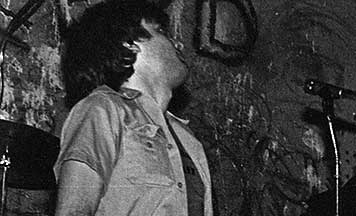
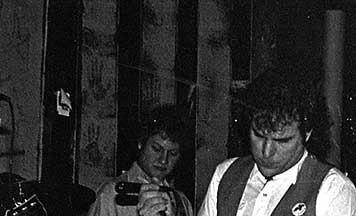
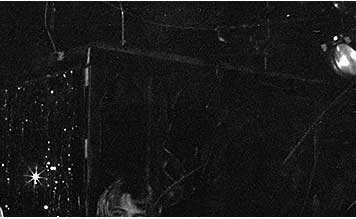
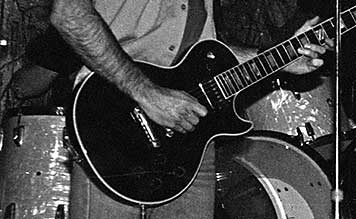
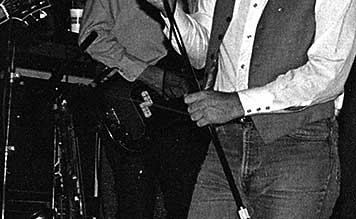
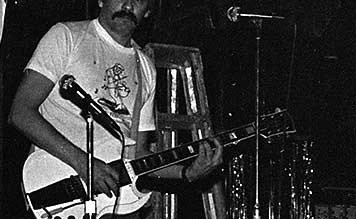
In the winter of 1980 I formed a new band, Bag of Wire, with fellow ex-Nervebreakers, Mike Haskins and Bob Childress.
Bag of Wire is the Jamaican slang term for betrayer. The name was given to the man who betrayed black nationalist Marcus Garvey to the law. We thought it was somehow appropriate.
Bag of Wire consisted of ex-Nervebreakers Mike Haskins on lead guitar, Bob Childress on bass, and me, Clarke Blacker on rhythm guitar, with ex-Vomit Pigs Russell Flemming on drums, and Curtis Hawkins on vocals. Few people know that when they started Bag of Wire, Mike and I seriously considered Bobby Soxx as lead singer because he was one of the most interesting people they knew. Mike was, unfortunately, a bit concerned about Bobby’s violent reputation and eventually Mike suggested his friend Curtis Hawkins, who ran the collector record store, Stacks O’ Tracks.
Curtis was the perfect choice. His physical size and stage presence gave him an air of authority on stage. Bag of Wire made a very big splash in Dallas in the winter of 1980. Their distinctive posters, most featuring Marilyn Monroe, set a rather different tone than the typical band poster of the day. A Rockabilly/Ska/Punk/Blues band with an atypical (for the time anyways) emphasis on both guitars and dance, they chose no particular style, doing whatever music they liked, irregardless of any current fashion.
Drummer Russell Flemming is the very best rock drummer I have ever known and he was a major factor in our success with the dance crowd. Russell would later play with Tex and the Saddle Tramps with Mike Haskins, Thom Edwards, and Linda Shaw.
Bag of Wire played a furious schedule in the early months of 1981, often playing in two clubs a night. They would open for a touring act at the Hot Klub and headline the same night at DJ's.
Following is a selection of Bag of Wire poster and photo of the band live at the Hot Klub in Dallas.
Unfortunately this didn't last long. Bag Of Wire began to fall apart almost immediately. This was probably due in part to the fact that three of the five members were going through divorces at the same time.
I left in late February, 1981, and the band struggled on for a few months before finally disintegrating completely.
One night in January, 1981, while playing guitar with Bag of Wire at the famous Dallas punk club, DJ’s, Bobby Soxx approached me and said that we should start a band together. I didn’t think much about it at the time but things change. They did change. And a lot sooner than I thought. As a result, things would change for Texas music audiences in a big way.
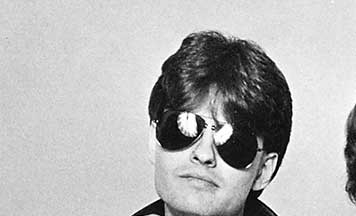
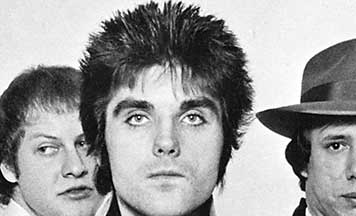
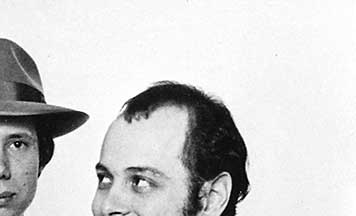
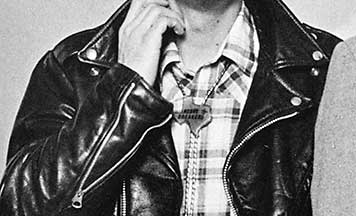
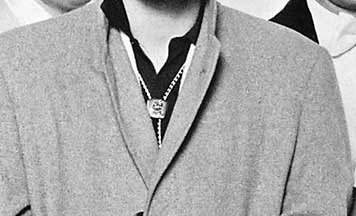
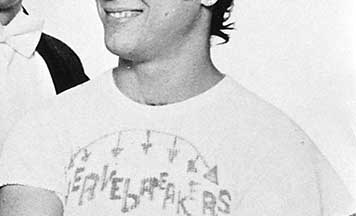
I replaced Pierre Thompson on bass who had quit soon after that show. Bassist Pierre had replaced Walter Brock on keyboards, etc.. At that time the band had a history of shifting membership based around the core of guitarists Mike Haskins and Barry Kooda, vocalist Thom Edwards, and drummer Carl Giesecke. Despite the fact that I was a guitarist, I offered to sit in on bass and eventually joined the band. I chose to take up the bass simply because I liked them and that was what they needed.
The Nervebreakers brand of guitar-based rock had influences ranging from the Troggs to Captain Beefheart. The band's real strength was in the extent and diversity of its influences.
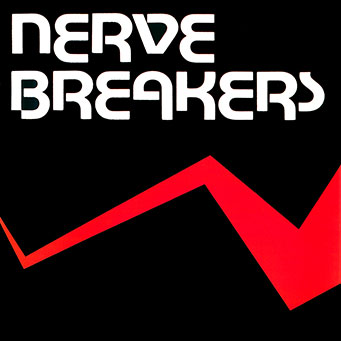 The writing team of Mike Haskins and Thom Edwards produced many fine examples of powerful and intelligent songwriting coupled with strong melodic hooks, guitarist Barry Kooda showed exceptional talent for writing and performing witty power pop, and drummer Carl Giesecke was responsible for one of their best known songs, “My Girlfriend is a Rock”. an infectious power pop hit which appeared on the "Politics" EP.
The writing team of Mike Haskins and Thom Edwards produced many fine examples of powerful and intelligent songwriting coupled with strong melodic hooks, guitarist Barry Kooda showed exceptional talent for writing and performing witty power pop, and drummer Carl Giesecke was responsible for one of their best known songs, “My Girlfriend is a Rock”. an infectious power pop hit which appeared on the "Politics" EP.
The next year was a dizzying rush as the punk scene began to explode. Pressure began to build as the clash between the established music scene and the next music began to heat up the club scene. Shows were often difficult, and the less than appreciative audiences at some clubs could become violent. Mike's brother Steve Haskins was beaten up by an irate redneck at a show in Arlington. We didn't finish the show. The Nervebreakers often played to only one or two paying customers. Because of a lack of club support, we began to put on our own shows, usually with the Dallas band The Toys. In the summer of 1977 we played a show with the Ramones sponsored by a local radio station and the reception was good.
When we heard that the Sex Pistols were going to play Dallas on their US tour we managed to talk our way onto the bill. Mercury Records sent an A&R man to the show to size us up. They eventually passed on signing us because they were disappointed that we didn't sound like the 13th Floor Elevators. How did they ever get that from our demo tape?
The climate in Dallas was very tense. The local radio stations were whipping up rednecks by hosting call-in shows where people could call and say why the Sex Pistols shouldn't be allowed to play in Dallas. There are some mementos from that night in the Gallery section of this site.
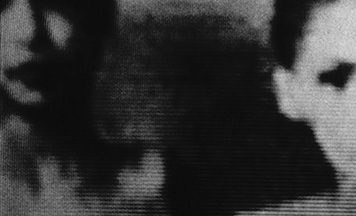
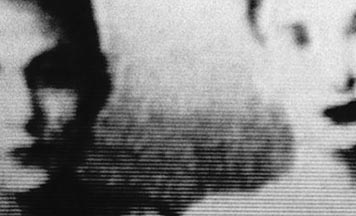
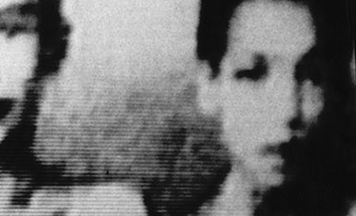
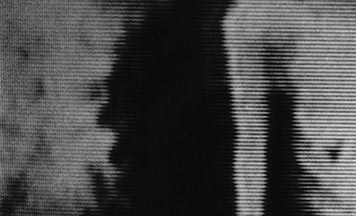
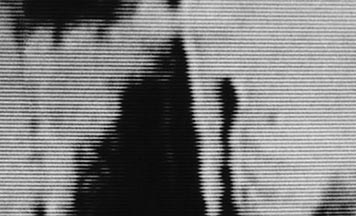
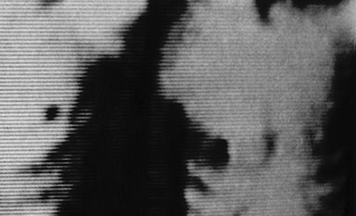
The Teenage Queers was active in 1979 and 1980. Some of their material has become available in the last few years. There was two distinct versions of the band.
Version A consisted of:
Bobby Soxx — vocals
Valerie Bowles — Bass
Pogo (Kim Wolfe) — Guitar
and Jerry Dirkx — Drums
Version B (a.k.a. The Telephones) consisted of:
Bobby Soxx — vocals
Jerry Dirkx — Guitar and vocals
Steve Dirkx — Bass
and Chris Dirkx — Drums
A number of their songs would later reappear with Stick Men With Ray Guns, sometimes intact, but often with entirely new music. Christian Rat Attack is one of their songs which was later completely rewritten.
The Bobby Soxx single is essentially Version B of the Teenage Queers. With lyrics by Bobby and music by Jerry and Steve Dirkx of the pop band The Telephones, this punk classic is worth a lot of money on the collector market. Check it out if you can find it.
There are the front and back covers along with a picture or two in the Gallery section of this site.






Lorem ipsum dolor sit amet, consectetur adipiscing elit. Sed interdum velit sit amet tellus auctor vehicula. Etiam vel sapien scelerisque mi auctor scelerisque vitae sed nisi. Vestibulum vel tempor massa. Etiam at odio aliquam enim condimentum faucibus vitae vitae risus. Nulla ornare, ante eu convallis congue, ipsum urna euismod arcu, id aliquam mi est non diam. Etiam facilisis accumsan diam fermentum tristique. Suspendisse sit amet mi nec tortor dignissim pretium. Proin ac faucibus nisl.
Maecenas eu eleifend dolor, ut feugiat enim. Ut bibendum eget sapien non posuere. Nunc sed ante non libero auctor ornare. Aenean id magna consequat, mattis sem et, porta augue. Maecenas dictum tortor ipsum, vel bibendum nulla egestas ac. Cras nisl eros, semper in auctor eget, convallis quis arcu.






Lorem ipsum dolor sit amet, consectetur adipiscing elit. Sed interdum velit sit amet tellus auctor vehicula. Etiam vel sapien scelerisque mi auctor scelerisque vitae sed nisi. Vestibulum vel tempor massa. Etiam at odio aliquam enim condimentum faucibus vitae vitae risus. Nulla ornare, ante eu convallis congue, ipsum urna euismod arcu, id aliquam mi est non diam. Etiam facilisis accumsan diam fermentum tristique. Suspendisse sit amet mi nec tortor dignissim pretium. Proin ac faucibus nisl.
Maecenas eu eleifend dolor, ut feugiat enim. Ut bibendum eget sapien non posuere. Nunc sed ante non libero auctor ornare. Aenean id magna consequat, mattis sem et, porta augue. Maecenas dictum tortor ipsum, vel bibendum nulla egestas ac. Cras nisl eros, semper in auctor eget, convallis quis arcu.